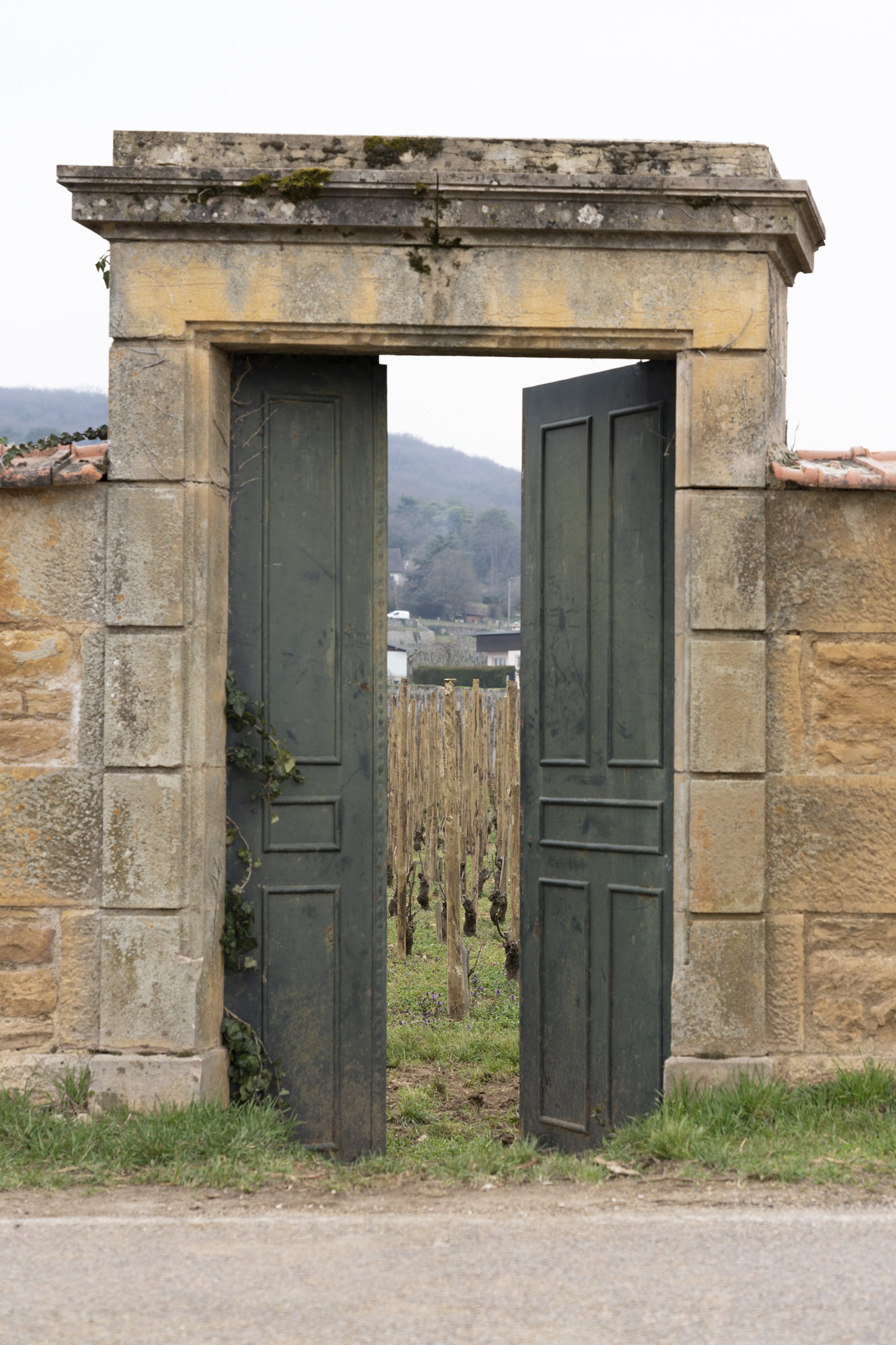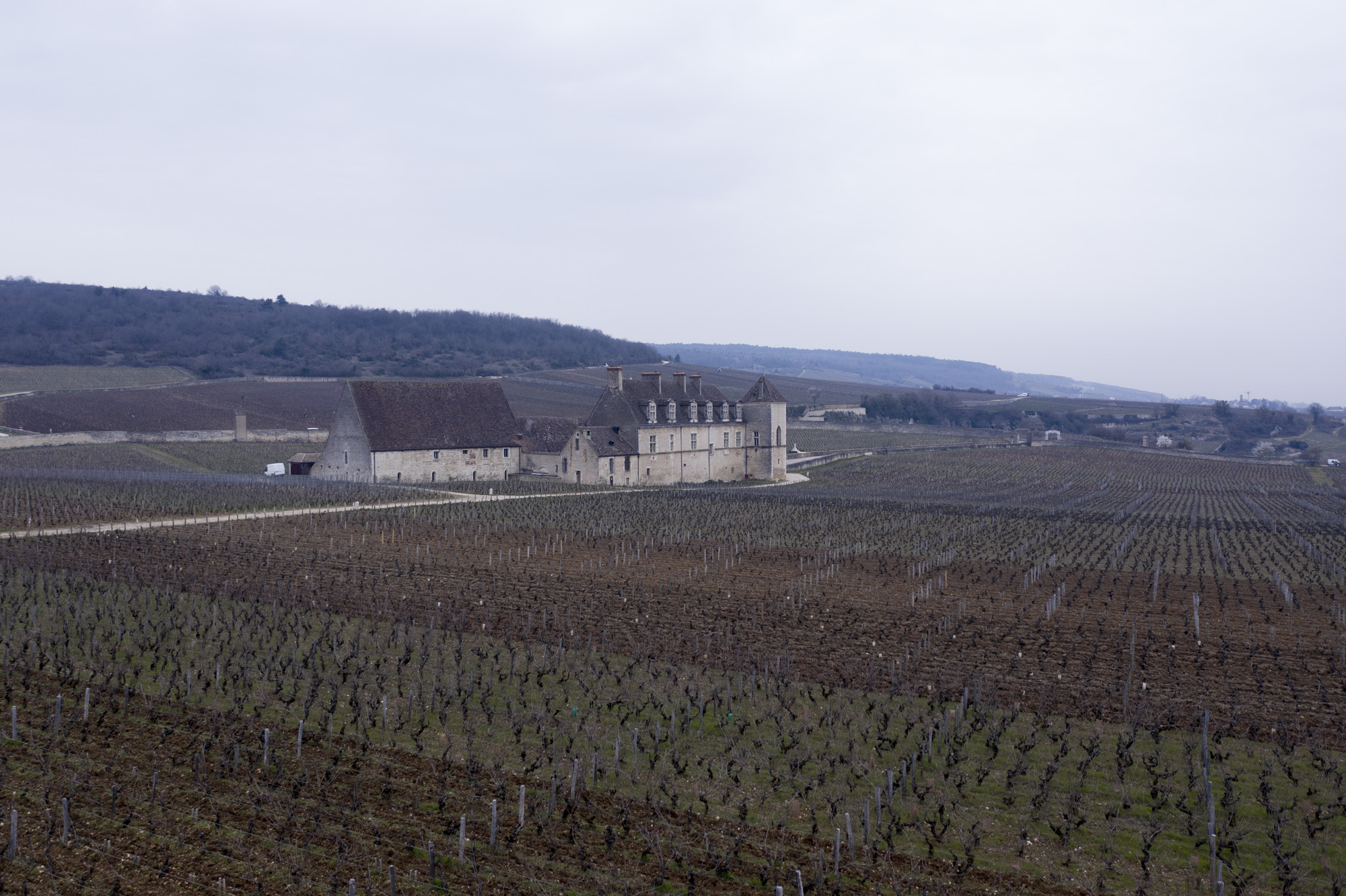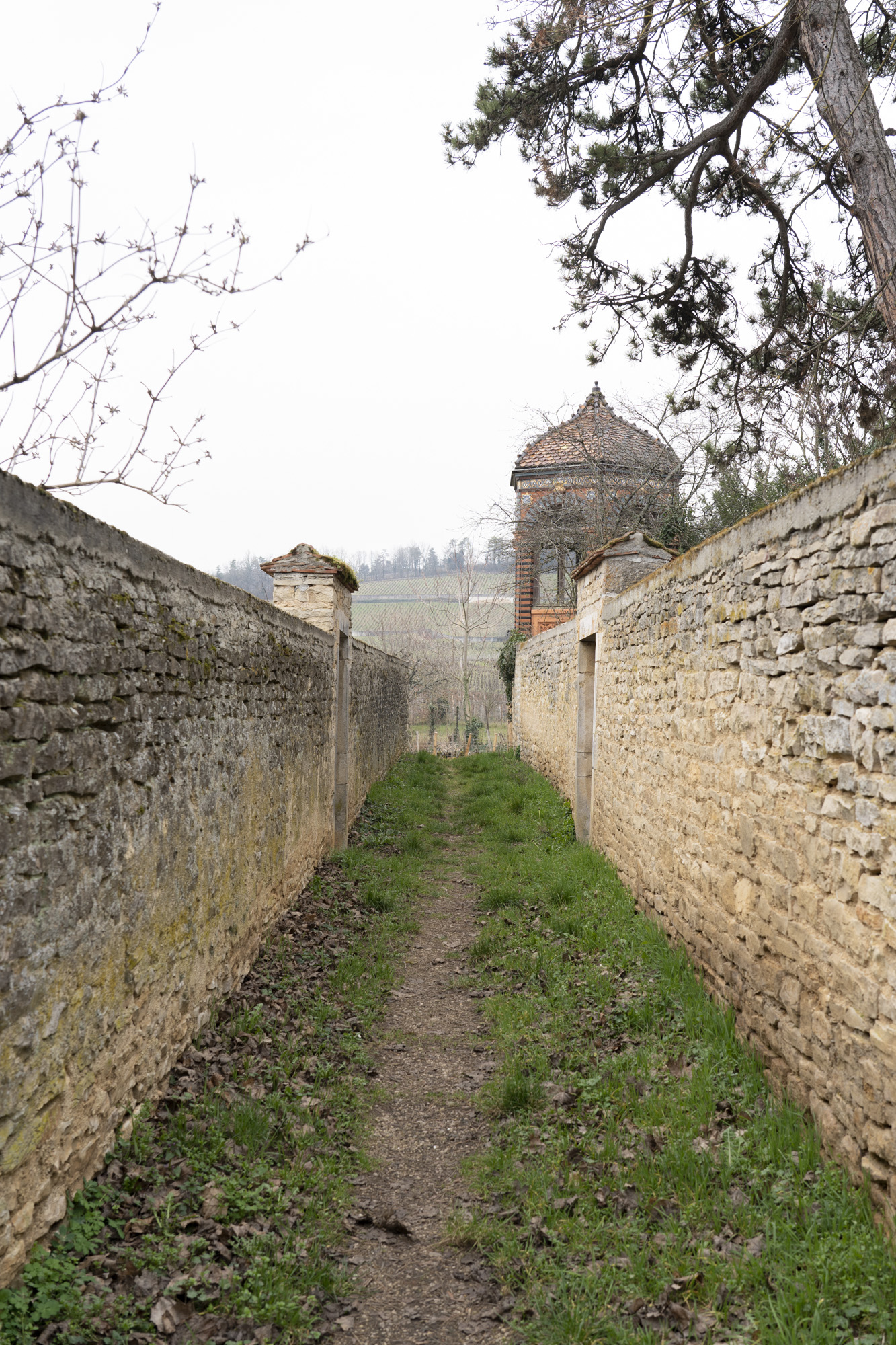The history of Burgundy is as rich as it is complex. It would seem that, way back in BC 600, a Celtic tribe called the Eduens were drinking wine in Burgundy, as is shown by the famous Vix vase. And the consumption appears to have been considerable since this vase, probably of Greek origin, could hold over 1,000 litres! But did those inhabitants actually make the wine? In his book called A History of Rural France, Gaston Roupnel, who was a vine grower from Gevrey-Chambertin as well as an historian, answers affirmatively.
Early days
Travelling progressively up the Rhône valley, Phoenicians, then Greeks and later on Romans introduced local populations to the taste of wine, then to its trade, and later on to its production, including along the river Saone. Numerous amphorae and dolia attest to the scale of production and consumption in the region. Winemaking equipment dating from the first century AD found at Selongey (between Dijon and Langres) is another sign of this early wine production in Burgundy. One of the earliest vineyards to have been clearly identified was in the vicinity of Gevrey-Chambertin. During the 3rd century a Greek historian called Eumenius, who was based in Autun, praised to the Emperor the "ancient and admirable vines" of his adoptive region. Sited on a passage-way between northern and southern parts of the Roman Empire, Burgundy necessarily witnessed the circulation of agricultural techniques, including grape varieties. DNA analysis has revealed that Pinot Noir is one of the oldest known varieties, and that it has sired many others. As we know, it is still the main red grape variety throughout Burgundy. The Burgondes were a Germanic tribe whose name lives on in Burgundy, but they did not reach this part of the world until the 6th century. Nevertheless they helped the development of vineyards by passing a law which authorized people to clear land in order to plant vines. One of their kings, Gontran, even left his vineyards to monks in Dijon. We shall soon see that monasteries were to play a crucial role in Burgundian viticulture.

Monks and Dukes
What has just been described covered some ten centuries and yet will serve merely as an introduction to what will follow, because the true establishment of the vineyards of Burgundy and their prestige began with the arrival of Cistercian monks in the 11th century. This monastic order acquired vineyards throughout Burgundy, from Chablis in the north to the region of Macon in the south, not forgetting the Côte d'Or in between. The logic behind these acquisitions is clear: wine is part of the Christian ritual, and was also required as a more healthy alternative to water and to serve to travelers to whom monasteries owed hospitality. Alternating work with prayer, knowing how to read and write, the monks from the Abbey of Citeaux progressively learnt how to make good wine and played a key role in improving both viticulture and vinification. Pruning, adapting grpe varieties to different soil types and site topography, building walls to protect the crop from marauding animals (or humans!), fermenting, maturing and storage methods, and even means of transport....they reviewed the full production process. Gradually, empirically, based on the respective qualities of the wines they produced, they formulated a hierarchy of vineyard plots that would become known as "climats". Alongside the monks, the aristocracy also played a key role in the growing reputation of the Burgundian vineyards. This was particularly the case with the Dukes of Burgundy. One of the most famous stories concerns Duke Philippe le Hardi who, in 1395, with the aim of improving the quality of the local wines, forbade the use of the gamay grape which he qualified as "a disloyal plant". Now the glory of all red Beaujolais wines, it suffered from its tendency to over-produce.
Pinot and Chardonnay rule
As a result of the Duke's decree, as well as its capacity to adapt to the regional climate, Pinot Noir became, and is now officially, the king of red grapes in Burgundy. It should be mentioned however that it has many variants. In 1855, in his Treatise on Grape Varieties, Oudart named seven of these, such as noirien franc, pinot luisant, rougin, pinot du Jura, plant de Pernand, plant de Volnay. Pinot noir is also one of the parents of chardonnay, the queen of Burgundy, whose other parent is a now obscure variety called gouais. There is a village in the Macon region bearing the name Chardonnay, although we don't know whether this variety was born there. Another descendant of the very prolific gouais is aligoté, another white variety which produces some lesser wines but has its own appellation in the village of Bouzeron. One should include small quantities of sauvignon blanc in the northern village of Saint Bris as well as a rare variety called sacy, also in the Yonne region which also includes the well-known Chablis appellation entirely devoted to chardonnay. It is notable that while many other regions in France and around the world (less so in New World countries) have built the reputation of their wines on blending from different grape varieties, sometimes imported ones, Burgundy has stuck to single variety wines and its local grapes. The diversity of their wines derives almost entirely from the diversity of vineyard sites and wine-making procedures.

The clergy
The renown of Burgundy's wines was already considerable in the 14th century, when cardinals from Avignon insisted that Citeaux Abbey sent them some. In the next century, the King of France issued an edict delimitating wine that could be called Français from that which could be called Bourgogne, and the physical boundary was the bridge of Sens in northern Burgundy. One could say that this was an early attempt to define geographical indications. One should also note that official barrel capacities varied on either side of the bridge. Burgundy was attached to France under Louis XI, but retained certain particularities long afterwards, to the extent that Raymond Dumay, author of an early wine guide in the 1950s, told of a peasant from the Tonnerre area showing him the road to Chablis with these words "and then you will be entering France". Now this comment is more than anecdotal: Chablis was for a long time a royal town that depended directly on the French monarchy, whilst its vineyards were divided between the provinces of Champagne and Burgundy, the site called Mont-de-Milieu forming the border. This had repercussions in terms of taxes, as well as on vineyard practices.
At the southern extremity of Burgundy, the region of Macon also had its specific score-sheet. For a long time its vineyards were grouped with the northern part of Beaujolais. This is clearly shown by the fact that the wines of Moulin-à-Vent (arguably the most prestigious village of Beaujolais) were rated, until the early 20th century, on a level with those from villages in the Côte d'Or. Despite the Maconnais being the most extensive sub-region of Burgundy, it was only in 2020 that one of its communes obtained the classification of 22 plots within Pouilly Fuissé as Premier Crus, and it still can boast no Grand Cru. In between the Côte d'Or and the Maconnais, the Côte Chalonnaise, and especially Montagny, has many Premiers crus. This is largely an inheritance of the Second World War and the German occupation of France which, initially, only concerned the northern half of the country and the border lay close to Montagny. The Wehrmacht were not allowed to requisition wines from Premier Cru vineyards !
Vine-growers, nécociants and cooperatives
Burgundy today includes barely 25,000 hectares of vines with AOC status, which can be compared with between four and five times that amount in Bordeaux. But this surface is sub-divided into over 80 appellations and more than 1,400 named plots or climats. In addition to the diversity of vineyard plots there are also several different production structures. These include major négociant firms, based mainly in Beaune or Nuits, rich producers owning slices of prestigious Grand Cru vineyards, and the more lowly grape growers within less famed regions such as Hautes Côtes, Tonnerre or Macon. For those who enjoy reading before, during or after tasting wines, this reality is well described in various works such as those of Gaston Roupnel (Nono), Henri Vincenot (Les Livres de la Bourgogne) or Jean-François Bazin (Les Raisins Bleus).
One has to remember that even if monks and dukes did a lot for the emergence of the most expensive wines and the best sited plots, the French Revolution turned a lot of this upside down by confiscating and selling off monastic and aristocratic estates lot by lot. Although many were bought up by rich bourgeois, the Napoleonic laws instituted an equal sharing among inheritors of property. This created a gradual fragmentation of ownership within named vineyards so that today, in order to propose a range of wines, an owner often has many small plots in many different appellations, each producing sometimes minute quantities of wine. A technical logic would be to group all these holdings, but both patrimonial and commercial logics tend to militate for status quo. Marriages between different families can provide an economic solution that also includes an extension of the range of wines and this is clearly shown by the number of Burgundy producers with hyphenated surnames! Burgundy has no less that 4,000 vineyard estates, of which two-thirds live exclusively from their production, although only one third actually make any wine. And the average vineyard area of all the estates is very small: just over 6 hectares
In what were long considered as less prestigious regions, such as Chablis, Macon or the Hautes Côtes this constant sub-division of vineyard holdings led vine-growers to group together and found cooperative wineries, particularly between the two world wars when prices also fell. There are around twenty in Burgundy today, some of them also sharing distribution. The biggest single producer in Burgundy is a Maconnais cooperative which groups 1,300 hectares of vineyards. In the Côte d'Or, merchant firms (called négociants in French) have had strong presences both in Beaune and in Nuits as from the 18th century and are the major grape buyers from small producers. They may buy grapes, must or wine and then make or mature according to the case. There are over 250 of these and they are essential to the marketing of the wines.
A world-wide reputation
The concept of climat, signifying a circumscribed and named vineyard plot that is usually vinified separately, is at the basis of the burgundian system. Bernard Pivot puts it this way: "when one pronounces the word climat in Burgundy, one looks at the ground, not the sky." The notion was initiated by monks for mainly practical reasons but it gradually evolved into a commercial scale of value. It was not until the 1930s that it became enshrined in appellation contrôlée rules. More recently, in 2015, UNESCO classified Burgundy's climats as a World Heritage site. This international recognition covered 1,200 vineyard sites between Dijon and Santenay. One could say that this was deserved since Burgundy's wines represent half the total agricultural revenue of 4 French départements and are exported to 140 countries.

Another aspect of Burgundy
Very expensive wines from top sites and producers should not hide another reality of the region, which is that of decent value-for-money wines that are those that are of special interest to us in these guides. One thinks of those from the Hautes-Côtes-de-Nuits region for instance. For a long time these were incorporated with those from the villages down the hillside. Until the 17th century, the section that stretches from Dijon to Chenove was known as the "Côte Dijonnaise" and no difference was made between those that came from the higher part (Hautes-Côtes today) and the now far more famous ones of Gevrey. They were all simply known as "wines from the hills and surrounding areas". And the prices that merchants would pay for them fell the further away from Dijon they originated, not necessarily on account of lesser quality but simply the added cost of transport. In his "History and Statistics of Vines and Wines of the Côte d'Or" published in 1855, Jules Lavalle wrote: "Until 1680, it was Dijon that produced the best wines of the region". A century later, those from Gevray had caught up, before far surpassing them. As one can see, hierarchies have always evolved in Burgundy. Classifications tend to fix the vision and situation of a given time, in this case that of the 1930s . What they cannot do is account for improvements, or indeed the contrary, that will take place in any particular sector. One can therefore say that some reputations are inflated today, whilst others are undervalued. From this point of view, appellations such as Chablis, Saint-Véran, Montagny or Pouilly-Fuissé can often produce wines worth considering at the top level, not to mention the regional or sub-regional appellations such as Bourgogne, Côteaux Bourguignons, Macon and so on for value-fpr money. Every year the Hospices de Beaune charity wine auction sells wines of which the majority come from Premier or Grand Cru sites that have been left to the Hospice charity hospital as from the 15th century. This is often presented as being the barometer for current market prices in Burgundy. But this should be taken with large pinch of salt since the price of a few barrels sold in a charity auction with a lot of media buzz has very little influence on the price of a wine from Macon or Irancy for example.
But what we have said about classifications should not be construed as denigrating the work accomplished long-gone generations It should be remembered that, between the two World Wars, political and economic considerations played in some cases a bigger part that any geological considerations, let alone the heritage of monks and Dukes. For example, when the system of appellations was being put in place, the mayors of certain villages declined the opportunity to have some vineyards on their territory classified as Grand Crus simply because they were afraid that this would increase the price of land, or even that of the wines that were at the time essentially sold to merchant houses who, in any event, sought to limit the number of Grand Cru plots. For example, Meursault contains 17 Premier Cru vineyards but not a single Grand Cru, depsite the fact that a climat such as Les Perrières, or the upper reaches of Les Charmes and of Genevrières probably deserve higher status. Lack of agreement between the various wine-growers and producers unions also played a part here. Meursault can perhaps console itself by thinking that its name is better-known than those of Chassagne or Puligny.
Boundaries between appellations can also be problematic, in particular when these coincide with communal boundaries that take little or no account of geological or topographic situations. There are also cases where, in some famous villages, not all of the vineyards have been included in that appellation, and yet they may produce excellent wines that have merely the regional designation of Burgundy. When producers own vines on either side of such boundaries, they will have to produce separate wines but will often take as much care with the wine carrying the basic Burgundy label. Such wines can accordingly represent good value. Finally, one should always take the human factor into account, and perhaps especially in Burgundy given that individual vineyard sites, of whatever hierarchical level, are very often shared among several owners and they do not all produce wines of the same quality.
Hervé Lalau
Photo credits: Aurélien Aumond
